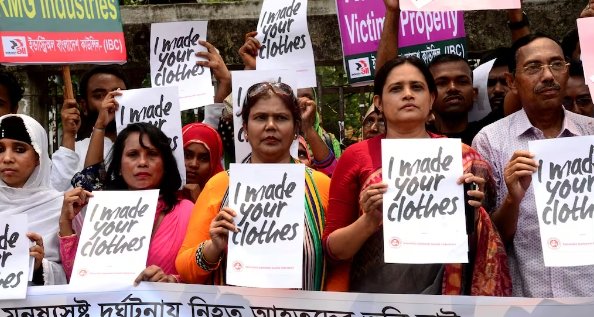In the wake of the devastating 2013 factory collapse in Dhaka, which claimed over 1,100 lives, the fashion industry was forced to confront the grim realities of its global supply chain. The tragedy, known as the Rana Plaza disaster, highlighted the dire need for better working conditions and safety measures in garment factories, particularly in countries like Bangladesh where much of the world’s fast fashion is produced. In response, over 200 brands signed the Bangladesh Accord, a legally binding agreement aimed at improving safety standards in the country’s garment factories.
Since its inception, the Bangladesh Accord has been widely regarded as one of the most effective and impactful initiatives in the fashion industry’s history. The program’s goal is to ensure that factory workers are safe from hazardous conditions and that the brands sourcing their products take responsibility for the working environments where their goods are made. Over the years, the Accord has expanded beyond Bangladesh, and its influence is being felt globally as brands and retailers face growing scrutiny over labor practices and sustainability.
The Accord’s Effectiveness
The Bangladesh Accord stands out not only because of its legal binding nature but also because it mandates real accountability. Unlike voluntary initiatives, which rely on brands to self-report and follow guidelines at their discretion, the Accord ensures that companies take tangible actions. It requires brands to conduct independent safety inspections of factories, make necessary improvements, and publish progress reports. Brands are held accountable for the factories they work with, ensuring that safety standards are met and that necessary investments are made in improvements.
Since the signing of the Accord, thousands of factories in Bangladesh have undergone rigorous safety audits. As of today, numerous factories have implemented significant upgrades, including improved fire safety, better structural integrity, and safer working conditions. The Accord’s success lies in its comprehensive approach — from regular inspections and follow-up audits to mandatory repairs and worker training.
It also has a clear mechanism for enforcing its rules. If a factory fails to meet the necessary standards, brands are held liable and are required to ensure corrective measures are taken. If no action is taken, brands risk being named and shamed. This public accountability is a powerful tool, ensuring that non-compliance has real consequences.
Global Expansion and New Regulations
As the Bangladesh Accord evolves, it has been extended beyond Bangladesh to other garment-producing countries with similar risks. The Accord’s principles have been applied to factories in Pakistan, Cambodia, and Myanmar, with brands extending their commitments to safety across global supply chains. This international expansion highlights how the Accord is becoming a cornerstone of the fashion industry’s efforts to improve conditions not just in Bangladesh but around the world.
One of the key reasons for the Accord’s growing influence is the increasing pressure from governments and consumers for better corporate responsibility. Countries around the world are tightening regulations around labor rights and environmental sustainability, and companies are feeling the heat to comply. In the European Union, for instance, new legislation is being introduced that requires companies to disclose their environmental and social practices. Brands that have signed the Accord are already ahead of the curve, as the pact’s safety and compliance measures align with many of these regulations.
Furthermore, the Accord’s focus on sustainability aligns with new global frameworks pushing for transparency in supply chains. As sustainability becomes a core component of the fashion industry, the Accord’s holistic approach — encompassing worker safety, factory conditions, and social responsibility — positions it as a vital tool for brands looking to meet new sustainability regulations.
Limitations and Challenges
Despite its success, the Bangladesh Accord is not without limitations. One of the main criticisms of the initiative is its narrow focus on factory safety and labor rights. While it has made significant strides in improving these aspects, it has not tackled the broader issues of wage inequality or the environmental impact of garment production. Workers may be safer, but they still face low wages and long hours in many cases. Similarly, while factory safety is improving, the environmental degradation caused by the fashion industry, such as pollution and textile waste, remains largely unaddressed by the Accord.
Moreover, the Accord’s effectiveness is only as strong as the brands that sign it. Many large brands that were initially enthusiastic about the Accord’s goals have seen it as a compliance check rather than a genuine commitment to improving working conditions. The effectiveness of the Accord hinges on the willingness of brands to take meaningful, long-term actions, rather than simply doing the minimum required to meet the standards.
Finally, as the Accord expands internationally, it faces the challenge of adapting to local contexts. Safety standards and regulations can vary significantly between countries, and what works in Bangladesh may not be as effective in other parts of the world. For example, in countries with weaker labor laws or a less developed infrastructure, enforcing the same level of safety might be more difficult.
Moving Forward
Looking ahead, the Bangladesh Accord offers a critical model for the fashion industry to follow, particularly as consumer demand for transparency and ethical practices grows. However, to maintain its relevance and impact, the Accord will need to evolve. There is an opportunity to expand its scope to include environmental issues, living wages, and more holistic approaches to worker well-being. Additionally, there is a growing call for increased collaboration between brands, workers, governments, and NGOs to ensure that factory conditions improve in a way that benefits everyone involved.
In conclusion, the Bangladesh Accord stands as a beacon of progress in the fashion industry, offering a robust framework for improving factory safety and labor conditions. While it has undoubtedly made significant strides, there is still much work to be done to address the wider social and environmental issues within the industry. As fashion’s sustainability and responsibility efforts continue to grow, the Bangladesh Accord will remain a pivotal part of the conversation — and a critical tool in shaping the future of fashion.






